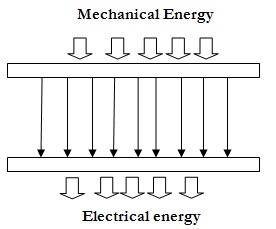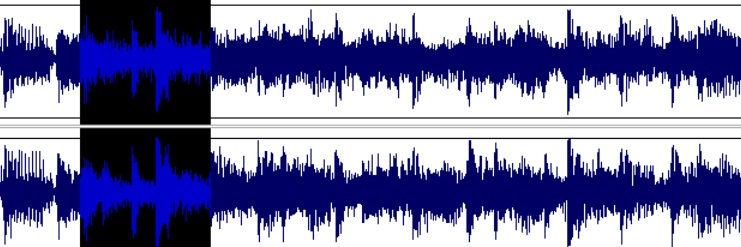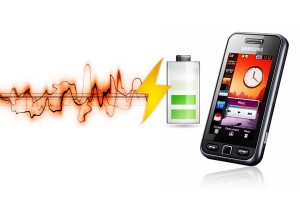Title: Voice Usage to charge Mobile Phones
Authors: P.S.K.Preethi, D.Padmasree & G.Niharika, 1st Year BTech, ECE
College: Prakasam Engineering college, Kandukur
ABSTRACT:
When we are in important conversation on the mobile phone if we hear beeps indicating that our battery is low we search for our mobile charger. If every time the charger fails we don’t know what to do. For this what we have to do is keep talking. There is a new technique for converting sound into electricity which allows charging of the phones using the power of human voice. The usage of Human voice is pollution free.
INTRODUCTION:
Sound pollution is the great disadvantage that we come across our daily life. By using the technology of “voice usage to charge mobiles”. We can convert this great disadvantage into our use. The sound that always exists in our everyday life and environments has been overlooked as a source. Power generation takes place by turning sound energy from speech, music or noise into electrical power. By this technology the world can entirely changed without wasting the electrical energy.
PRINCIPLE:
It works on the principle of “Piezoelectric phenomena “Piezoelectric principle means conversion of this technology mechanical energy to electrical Energy. Here the sound waves Vibrates The vibrations are the input to the system and produces the output as electrical energy. The piezoelectric materials are used on the top of the electrodes. These materials have the capability to convert mechanical energy to electrical energy. Examples of piezoelectric materials are PdAu. Piezoelectric power-driven wireless self-powered systems (“Electricity-generating silicone implants could empower electronic devices”). Such a piezoelectric generation aims to capture the normally wasted energy surrounding a system and converts it into usable energy for operating electrical devices.
Fig: Conversion of mechanical energy into electrical energy
TECHNOLOGY:
The technology uses tiny strands of zinc oxide sandwiched between two electrodes. Sound-driven power generation using nanogenerators based on piezoelectric ZnO nanowires are used here the sound absorbing plates are used to absorb the sound. These are the new technology now-a-days. Latest Piezoelectric materials are used here. The latest invention nano-generator .the nano generators have the capability to change the mechanical energy to electrical energy.
WORKING: The nano-scale strands of zinc oxide between two flexible electrodes trapped. Incoming sound waves hit sound-absorbing pad.The sound waves produced reaches the sound absorbing pad which is present on top of the mobile. A sound absorbing pad on top vibrates when hit by sound waves resulting in the tiny zinc oxide wires to compress and release.

Fig: Schematic of sound driven piezeoelectric nano generator based on zinc oxide nano wires and its power generating performance.the flexible Pd-Au coated PES substrateacting as both a top electrode and a vibration plate was installed above the Zno Nano werk arrays
The below figure represents the voltage generation with respect to the time .the black colour represents the voltage generation
The compressions and rare fractions produced are given to the nano-generator and the movement generates an electrical current that can be utilized to charge a battery.
Fig: Compressions and rare fractions
This technology turns sound into electricity, allowing a mobile to be powered up while a conversation is in progress. The technology uses tiny strands of zinc oxide sandwiched between two electrodes. This technology consists of Nanogenerator which consists of two Sandwiched zinc electrodes. In between them carbon nanotubes are present. When the sound waves hit the surface of the zinc electrodes then it absorbs the sound. As sound is mechanical energy. The Nanogenerator converts mechanical energy to electrical energy. This is used to charge the battery.
In addition, the palladium or gold-coated flexible electrode also acts as a vibrating plate towards sound. So the mechanical vibration of the flexible electrode generated by the sound waves is directly transferred to the vertically aligned nanowires.
However the surface roughness of the plastic substrate is not entirely uniform. Thus the output performance can be significantly changed. Since the contact probability of Zinc oxide nanowires to the top electrode is affected.
We can realize more efficient sound-driven nanogenerators by replacing Zinc Oxide nanowires as a new piezoelectric nanomaterial with the higher piezoelectric coefficient.
The Nanogenerator is made up of nanowires. These nano-wires absorb the heat released by the power generation. In this way the radiation emitted from the system is eliminated.
The current generated is more than the normal charger. By using this technology the mobile is charged fastly compared with the normal charger.
In the above the input is the sound waves generated by the human voice. These waves’ reaches the sound absorbing pad and the process is going on as described in the above. The battery is charges in the above manner.
Features of sound absorbing pads:
• Environment friendly: Environment friendly means that they do not cause any harm to the environment.
• Shock resistance: If large amount of output is generated then we do not feel any external shock or injury.
• Sound absorption: They have the capacity of high sound absorption.
• Moisture proof: The plates are resistant to water.
• Heat insulation, acid-base resistant:
• The absorbing plates do not get damaged when they are subjected to heat and they are resistant to acids and bases.
FLOWCHART REPRESENTATION FOR THE PROCESS
ADVANTAGES:
• By using this technology there is no need of using mobile chargers.
• The sound produced when we walk can also be used to generate electrical energy
• No wastage of electricity.
• Noise pollution can be reduced.
• By altering the material the wires are made from they will be able to produce more energy at lower sounds levels.
• Mobile phones can also be charged by the sound at the music concerts, background music etc.
APPLICATIONS:
• Sound power can be used for various novel applications including cellular phones that can be charged during conversations and sound-insulating walls near highways that generate electricity from the sound of passing vehicles.
• This technology is useful at the place where there is no availability of switchboards.
• The latter development would have the additional benefit of reducing noise levels near highways by absorbing the sound energy of vehicles.
CONCLUSION:
“Voice usage to charge mobile phones” creates a new era by saving electrical energy and creating ecofriendly environment. This is the best solution for the power crisis. This technology is very useful for every battery backup device.
REFERENCES:
• www.efy.com
• www.sangwookim.com
• www.science daily.com





